'Omar' in San Francisco, a spectacular slave opera with an uneasy message
/By Elsa Tranter
11/11/2023
Photo credit: Cory Weaver / San Francisco Opera
Omar (winner of this year’s Pulitzer Prize in Music) had its West Coast Premiere at San Francisco Opera this month. Non-traditional in many ways, it has attracted many new operagoers and given them a mix of opera/non-opera elements. The libretto was written by the polymorph Rhiannon Giddens, well-known for participation in the Carolina Chocolate Drops and also for hosting the podcast “Aria Code”; she and Michael Abels wrote the music.
The opera tells the life story of Omar Ibn Said, a nineteenth-century educated man from what is now Senegal, who was sold into slavery in the American South before the Civil War. In his later years he wrote his autobiography, in Arabic, the only known first-person account of life as a slave written in that language; this written record provided the material for the opera. A deeply religious Muslim, his faith sustained him through the many hardships he endured. The opera combines many types of music, from Arabic chants to African rhythms and from operatic arias to jazz. The orchestra performed this unusual mixture, including many African percussion instruments, in fine form under the baton of John Kennedy (who also conducted the premiere at the Spoleto Festival USA last year).
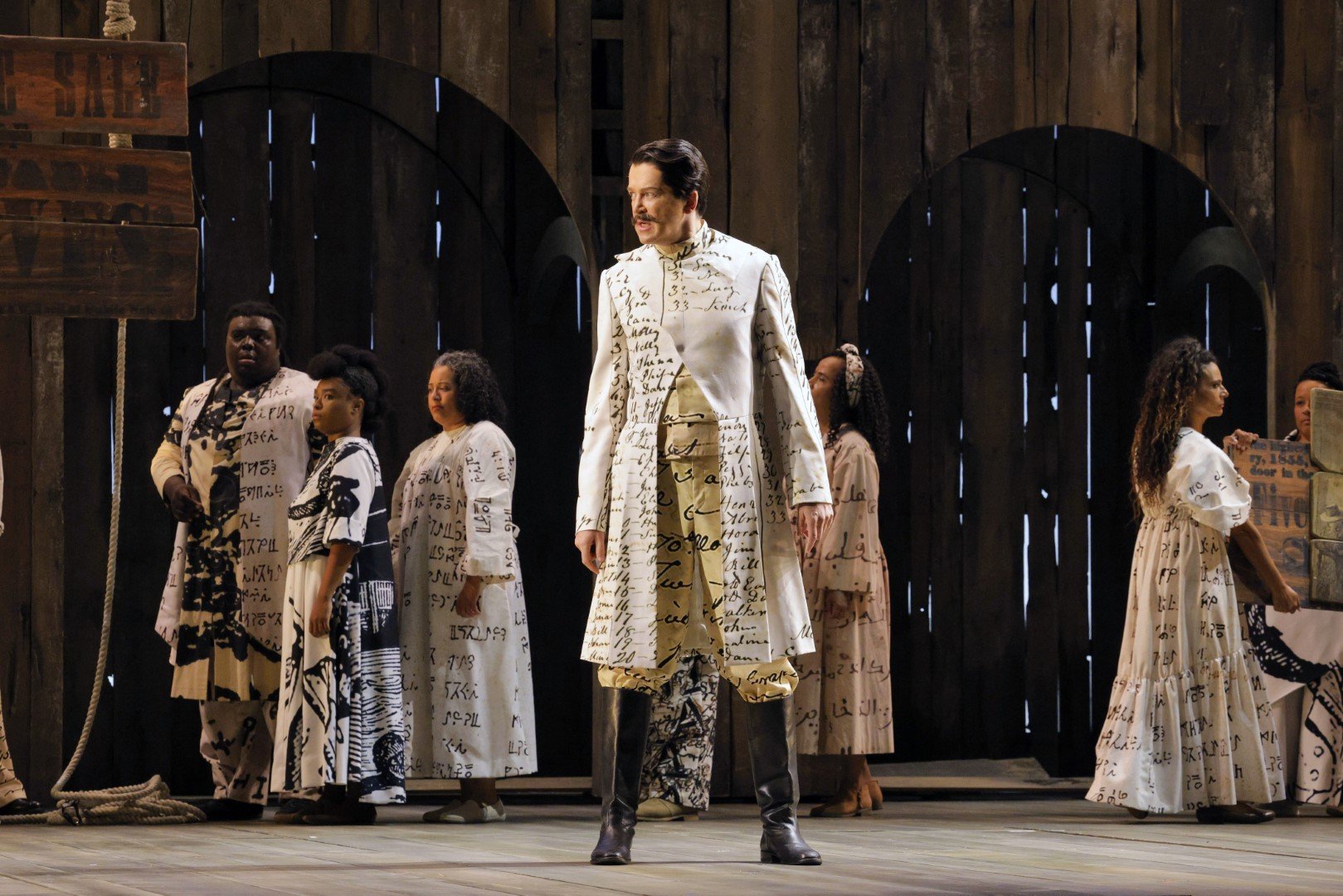

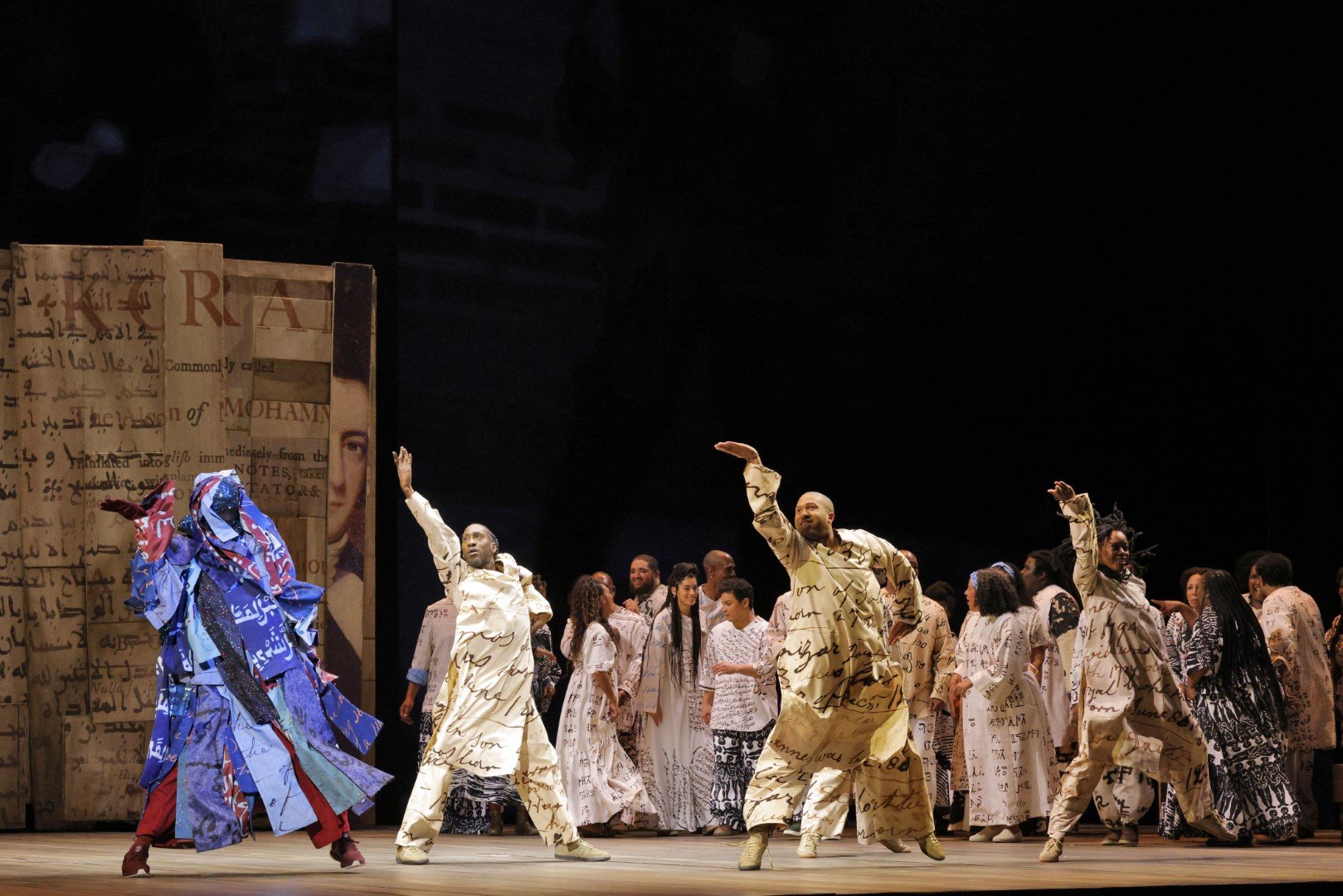
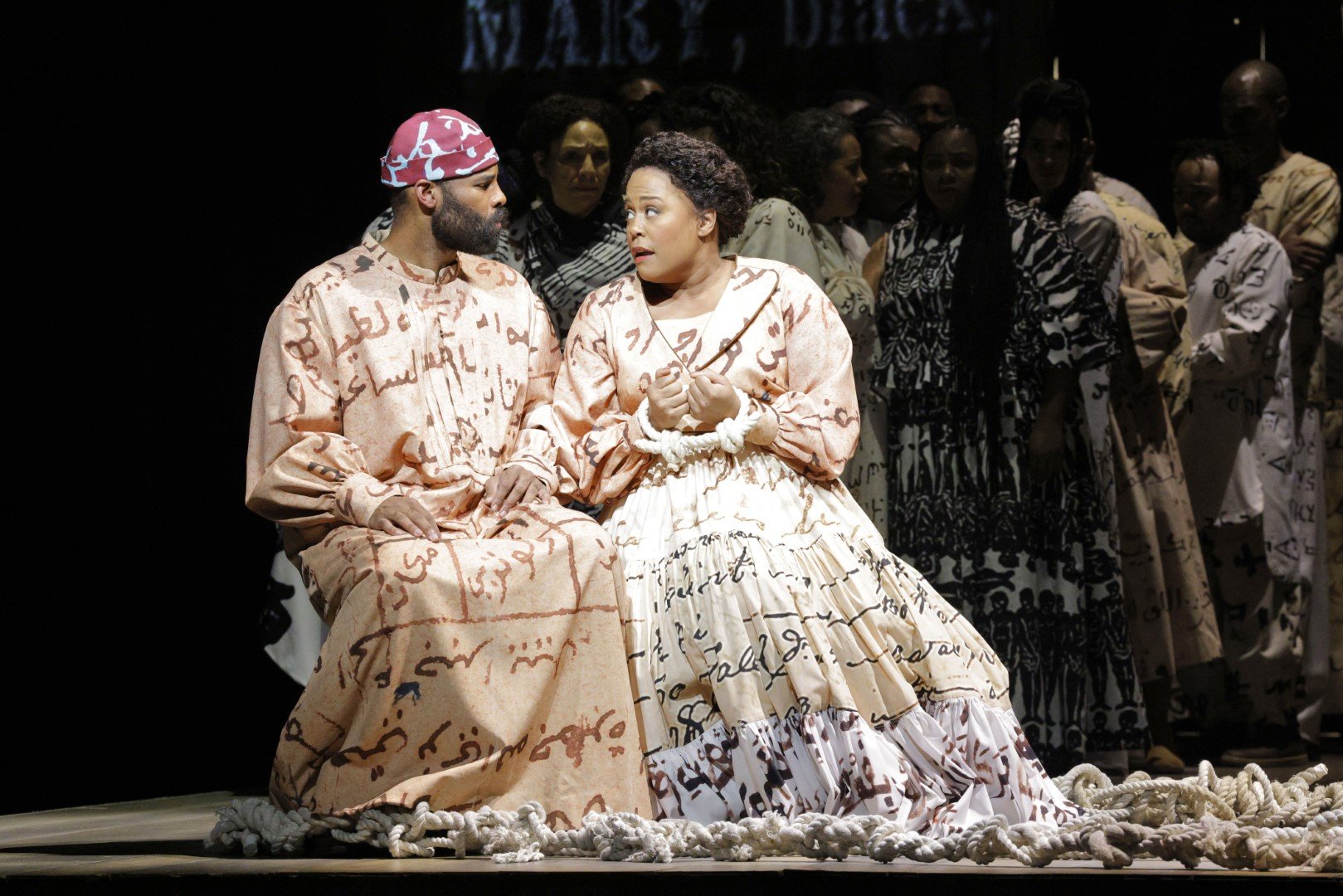
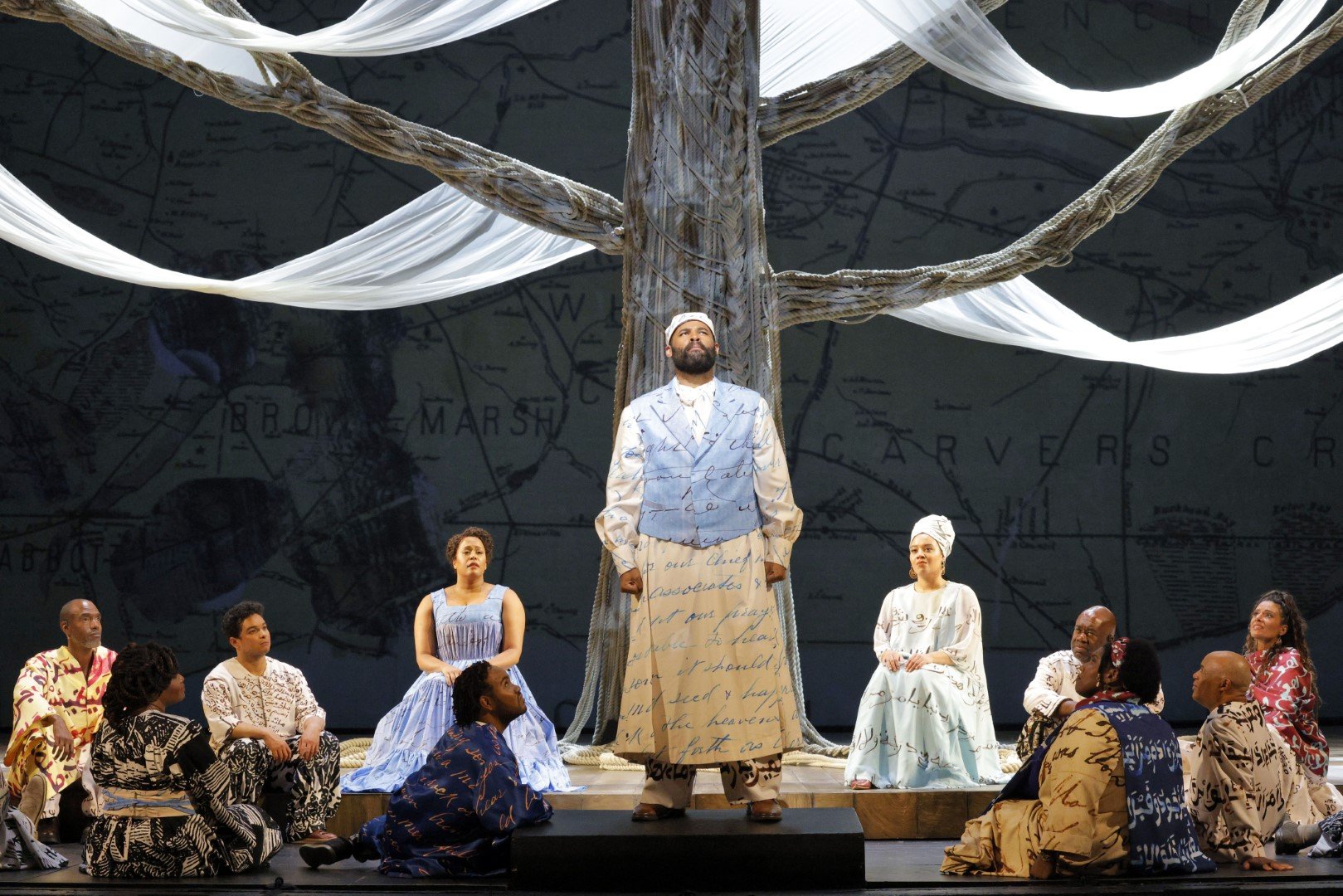
The first act had an arc to it—from Omar’s early days to his transport at sea to America to being sold into slavery. The second act continued with his life in America, but wasn’t as clear in its arc. There was a dramatic solo and chorus which felt like the conclusion, but then there were additional scenes and another finale. The closing scene seemed to be somewhat of an exhortation to us, the audience, to follow the way of Allah so that all would be well (and with a hint that not doing so might lead to trouble). At least that’s how it appeared to me, watching it in these troubling times of war between people of different religions. The end left me feeling uneasy, but did not affect my companions in the same way.
The title role was sung and acted convincingly by tenor Jamez McCorkle, making his company debut in a role that he created at the opera’s premiere. At the start of the opera, he made a dramatic transition from a Black Everyman on an empty stage, to the dignified scholar Omar; he did this by donning traditional garments, one by one, in front of us all in the audience. (And, at the finale, he reversed this transformation and became again a Black Everyman on an empty stage. His voice was powerful and clear and well-suited to the part. Soprano Brittany Renee also made her San Francisco Opera debut as Julie, friend and co-religionist to Omar. She was well matched with Omar, vocally and dramatically. Mezzo-soprano Taylor Raven, an audience favorite from her days in the Merola Training program at SF Opera, sang the role of Omar’s mother Fatima. She was alive only in the early days of Omar’s life but returned in his dreams throughout the opera. Her voice resonated well throughout. Baritone Daniel Okulitch rounded out the cast in dual Southern white men roles. He was less persuasive (maybe partly psychologically since neither of his characters was particularly sympathetic.
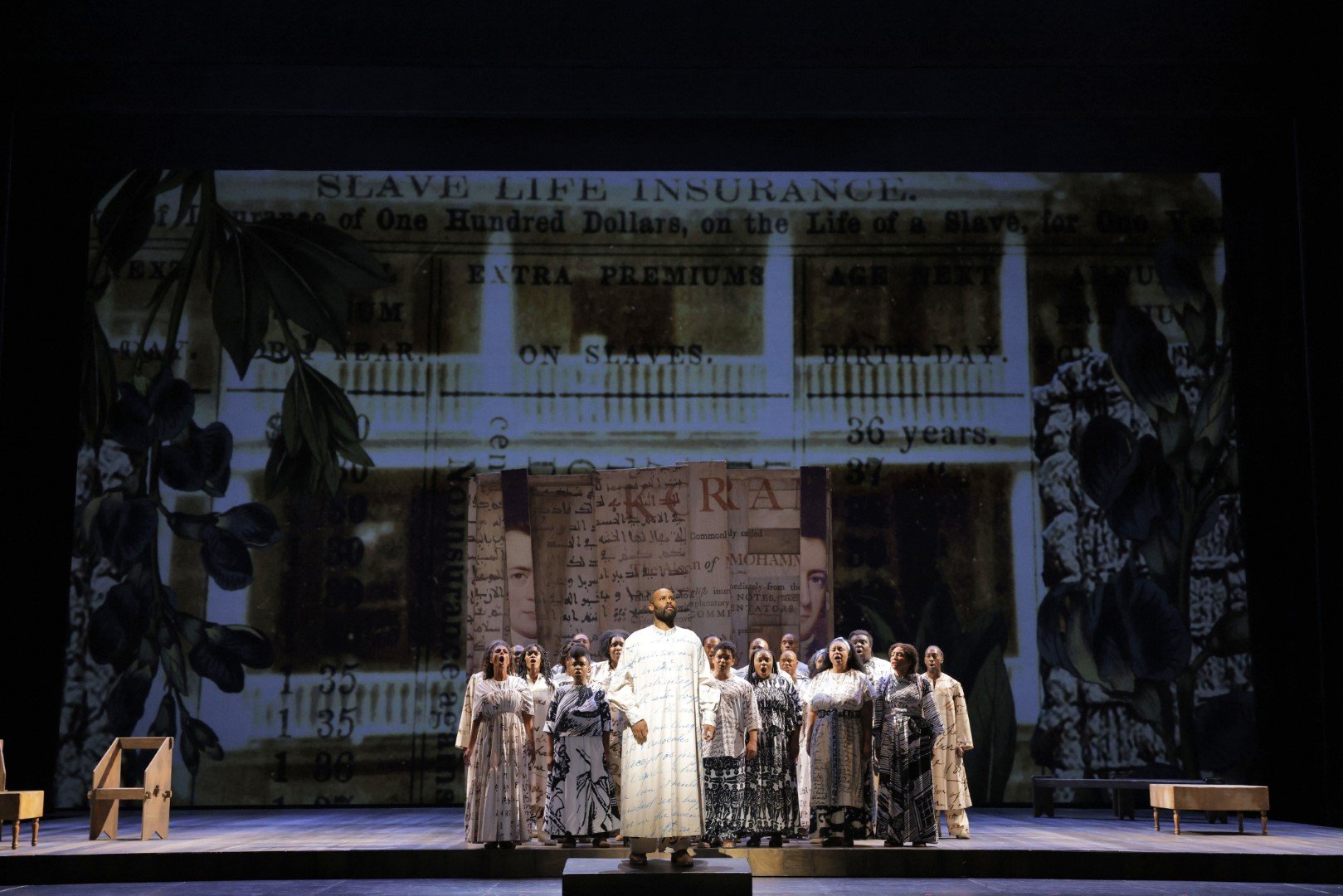

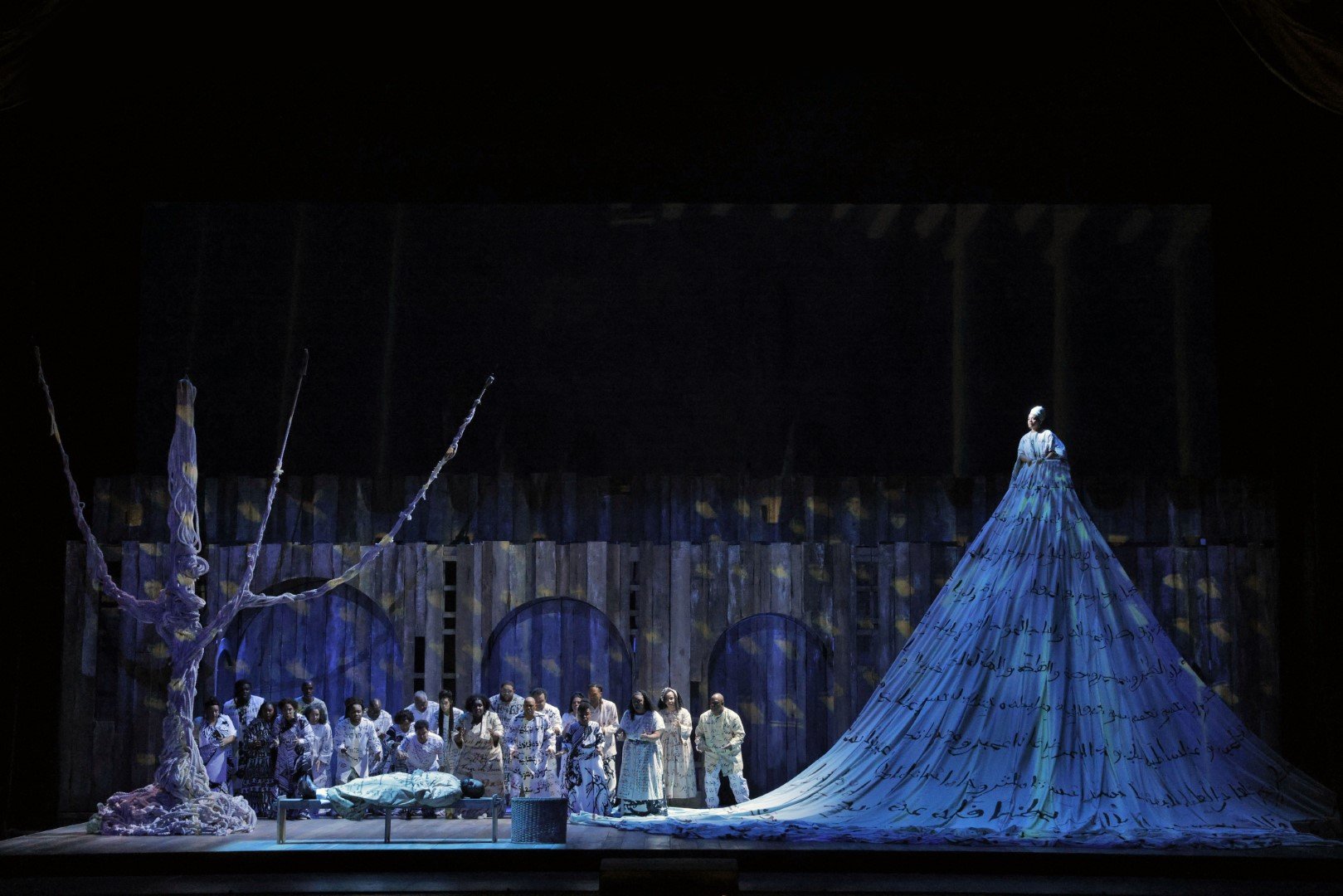
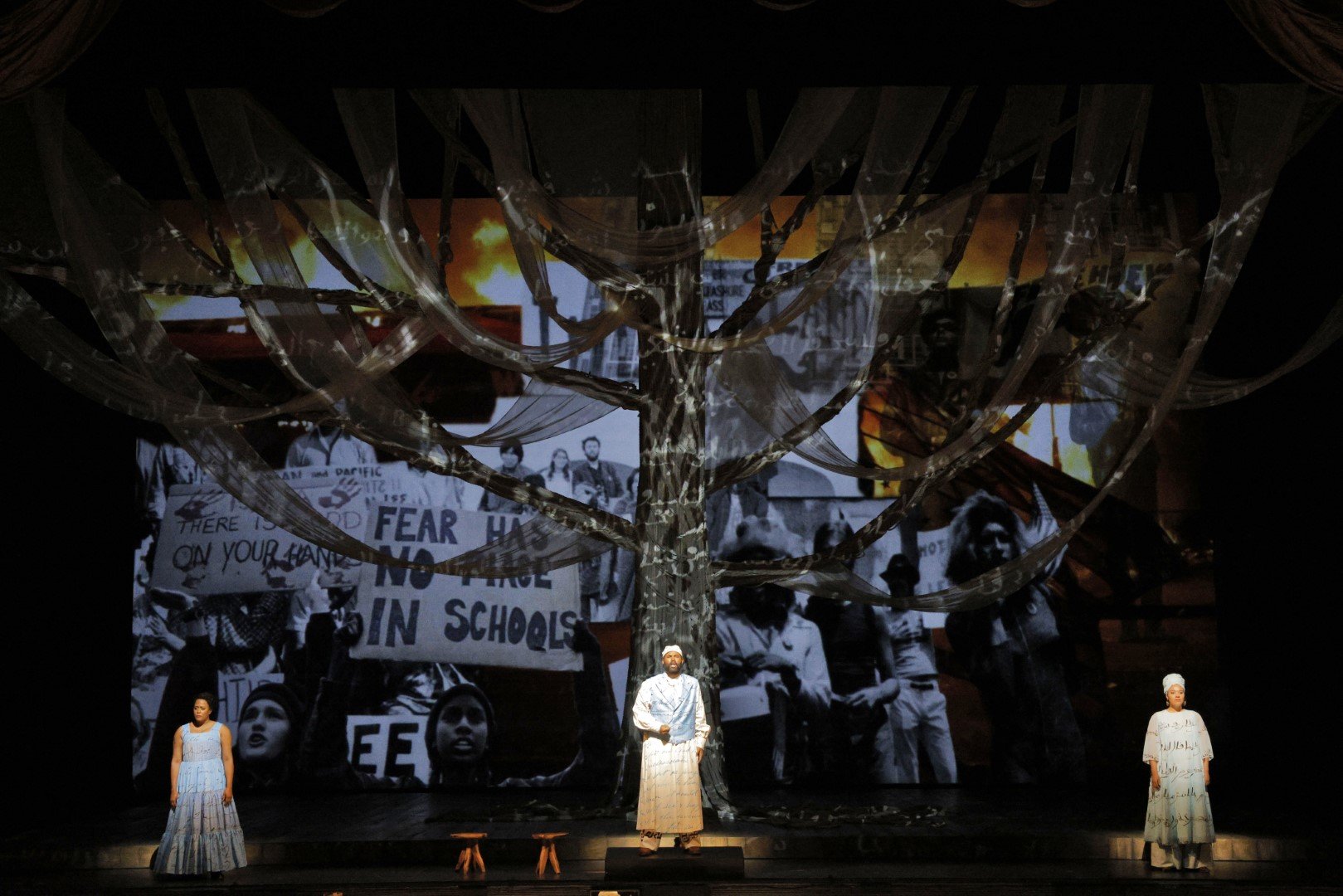
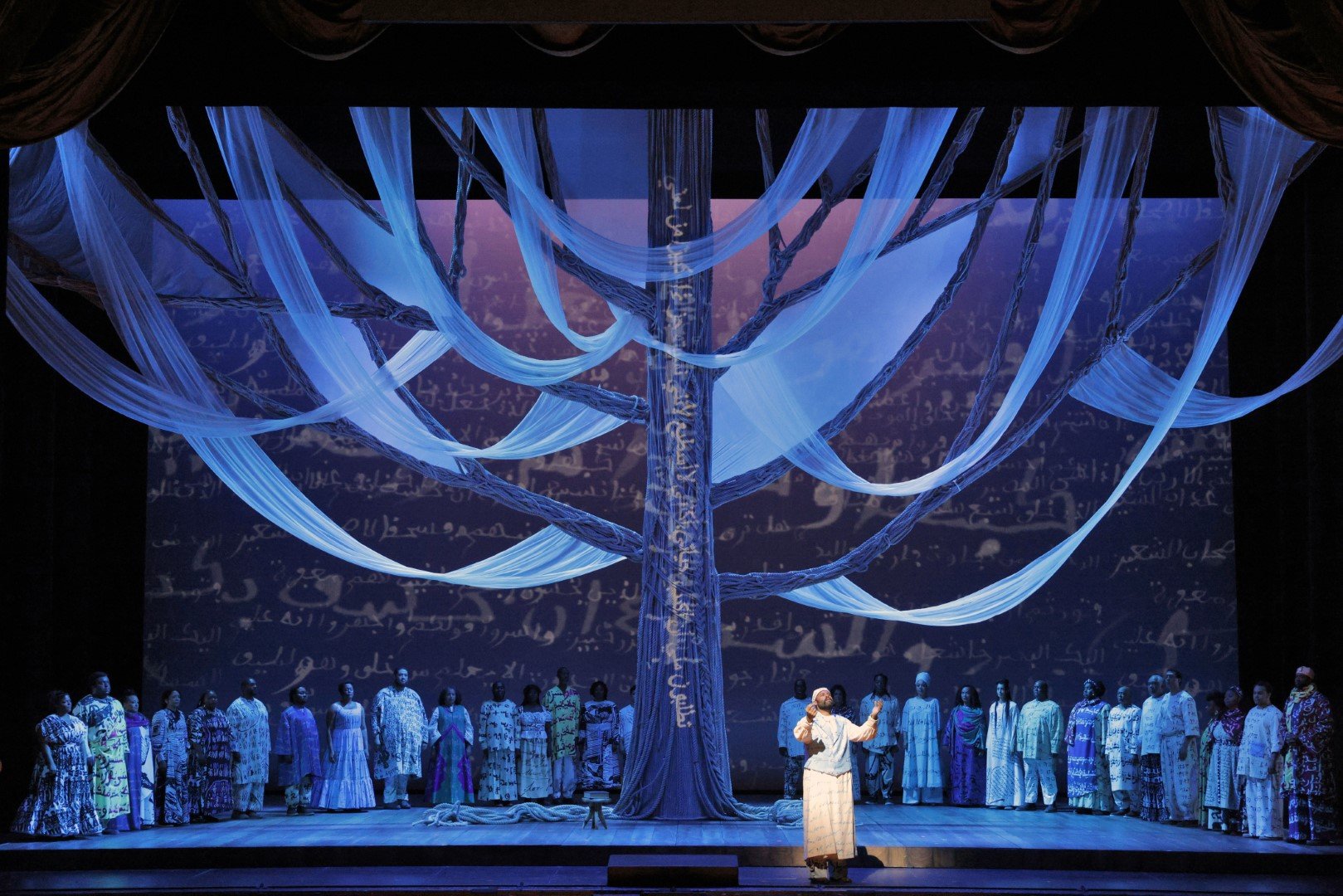

The staging was quite spectacular and varied; Director Kaneza Schaal was responsible for that. There were several memorable symbols that changed dramatically with the expert lighting design of Pablo Santiago; and a lot of use of Arabic letters and writing. The chorus moved and sang extremely well under the direction of John Keene. The production design by Christopher Myers emphasized the power of the written word with Arabic lettering projecting in many scenes and words in different African languages appearing in other guises throughout the opera. The costumes (designed by April M. Hickman) continued this theme and had special significance, as noted in the program. Not to nitpick, but I found one dissonant note in the costume of the second slave-owner, which was a shade of blue that seemed not to fit with all the other colors in the production. Most of the designers of this opera were making their debuts in San Francisco, signaling a move toward new thinking about how to stage operas. Having the chorus spread themselves in the aisles of the orchestra section for a rousing anthem near the conclusion was very beautiful and melodically effective. I do hope this doesn’t become a trend; something similar happened during Lohengrin—it could easily become a cliché. My new-to-opera companion was more taken with this part of the staging, suggesting a divide between traditionalists and the very people the opera is hoping to attract to more productions.
The audience was very enthusiastic (and very stylish); it was exciting to feel the energy throughout the opera house. I think traditionalists and novices all could find something special to enjoy on this evening. There are four more performances—November 11, 15, 17 and 21, all at 7:30. The November 11 performance will be live-streamed and available to watch on demand for 48 hours beginning Sunday November 12 at 10 am. Tickets for all of the above can be found at sfopera.com.
Elsa Tranter is a Bostonian who has lived in Berkeley for over 40 years and has been an opera goer for most of those years. She worked as a graduate student adviser at UC Berkeley and still attends Cal Performances regularly. Her favorite composer is Wagner and her favorite opera is Tristan und Isolde.


